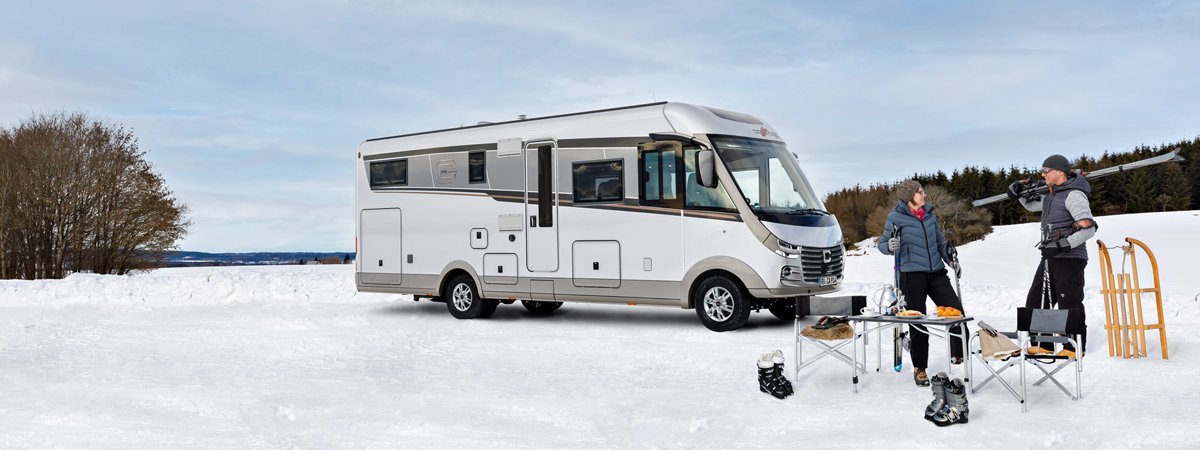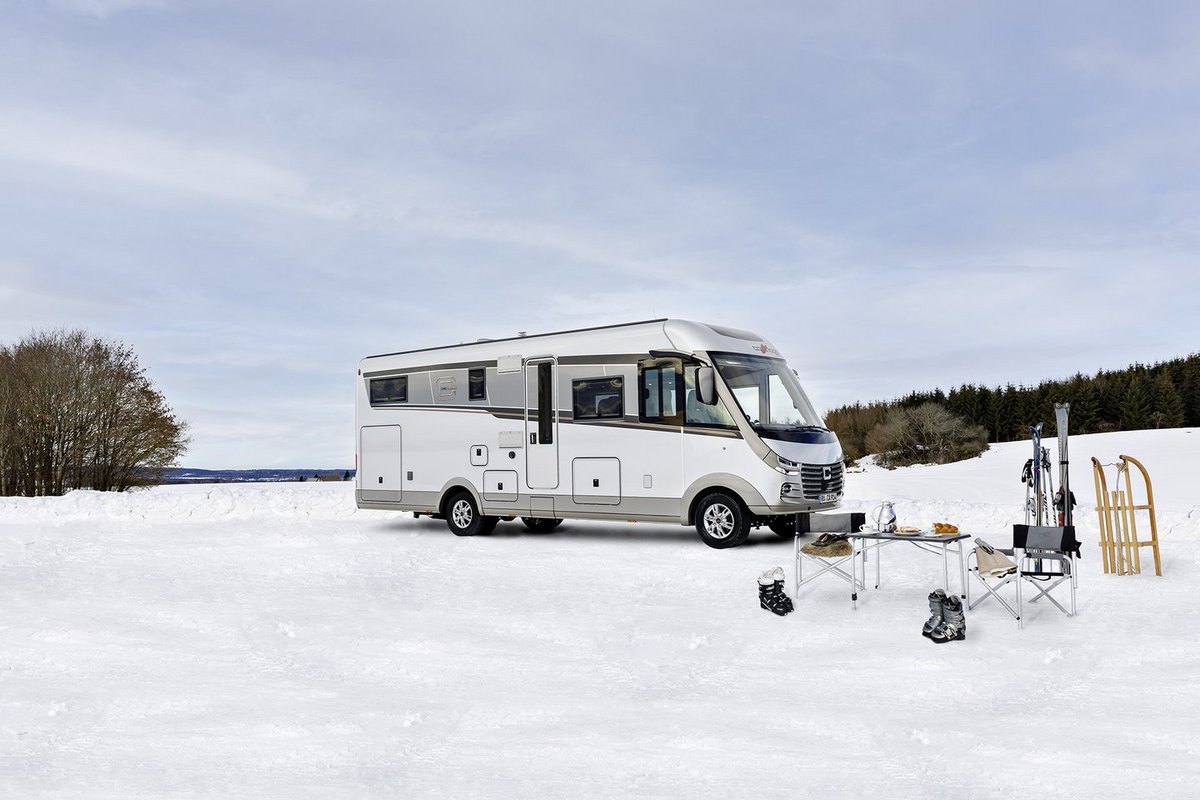Would you like to give your motorhome a winter break? Then there are a few points to consider in advance! Use the following overview to find out what work needs to be done before your motorhome takes a winter break. Then next spring the new travel season can start again without a care in the world:
EXTERIOR
- Inspect your motorhome all around and look for pockets of dirt from leaves or soil (especially on the frame and underbody). There is a risk of rust formation due to the moisture that may develop.
- Clean the drains of doors and sills.
- Wash your motorhome, polish it and seal it with wax.
- Clean and disinfect the fresh and waste water tanks. Drain the tanks completely.
- Maintain windows and door seals with rubber care product without solvent (Vaseline).
- Seal all openings (windows, doors and pipes, etc.) (prevents animals from entering).
- Be sure to fill up your vehicle with gas before you park it (diesel). Fill up with AdBlue (prevents the tank from rusting).
- In any case, also check the antifreeze for the coolant and windshield wiper system.
- Charge the starter and supply batteries. Put the Li batteries into sleep mode.
- When your vehicle is level, put it in gear and release the parking brake (prevents the parking brake from sticking during winter).
- Park your vehicle dry and jacked up to relieve tire pressure.
- Inflate the tyres to about 0.5 bar above normal operating pressure. Recommended: use tyre recesses - this will prevent stationary damage.
INSIDE
- Leave the refrigerator slightly open in ventilation position.
- Put the cushions up so that the air can circulate all around.
- Place a dehumidifier granulate (prevents excessive humidity in the motorhome | effectiveness usually 2-3 months).
- Close gas cylinders, clamp them odd and put the protective caps on the bottles.
With your Carthago motorhome, you can take off at any time, even in winter. However, we have put together a list of things you should consider before your tour in colder outside temperatures:
- Check heating, boiler, blower in good time before departure.
- Check the functionality of the lighting, including the parking lights.
- Care for door and window rubbers with rubber care products without solvents (Vaseline).
- Check whether all technical inspection stickers (TÜV, AU, gas) are still valid.
- Check the levels in the engine compartment.
- Use windscreen water antifreeze suitable for temperatures down to at least minus 25 degrees.
- Lubricate jack stands with salt water resistant winch grease.
- Seal wheel arches and parts of the frame with underbody wax.
- Wash your vehicle, seal it and let it dry thoroughly.
- Replace windshield wiper rubbers.
- Check the starting and on-board batteries. If there is a white film on the terminals, clean the terminals and coat them with terminal grease. Check the screw contacts for tightness. Even in the case of maintenance-free wet batteries, it is essential to check the fluid level and top up with distilled water if necessary.
WHAT YOU SHOULD ALWAYS HAVE WITH YOU IN WINTER
- Flashlight and jumper cables
- Snow chains
- Snow shovel and broom
- Spare bulbs
- Wooden boards to prevent jack stands and tires from sinking in during thaws
- Ice scraper
- De-icer spray for door locks
- Warm work gloves
- Coarse sand or salt to aid traction
- Ladder for clearing the roof of snow and ice

